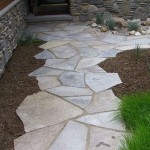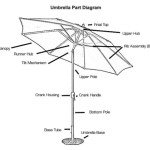How To Clean Concrete Patio: A Comprehensive Guide
Concrete patios, while durable and aesthetically versatile, are susceptible to staining and discoloration from various elements. Regular cleaning and maintenance are essential to preserve their appearance and extend their lifespan. Dirt, grime, mold, mildew, algae, and rust can accumulate over time, making the patio unsightly and even potentially hazardous due to slippery surfaces. This article provides a comprehensive guide on how to effectively clean a concrete patio, outlining different methods and solutions for various types of stains and levels of grime.
Before embarking on any cleaning process, it’s crucial to identify the type of stain or dirt present on the concrete. This will determine the most appropriate cleaning method and solution to use. For example, organic stains like algae and mildew require different treatments than rust stains or oil spills. Furthermore, the age and condition of the concrete should be considered. Older or more porous concrete may require gentler cleaning methods and more frequent maintenance.
Preparation: Gathering Your Supplies and Assessing the Patio
The first step in cleaning a concrete patio is gathering the necessary supplies. These may include a stiff-bristled broom, a garden hose with a spray nozzle, a bucket, cleaning solutions (detergent, vinegar, baking soda, specialized concrete cleaners), a scrub brush (or deck brush for larger areas), a pressure washer (optional), safety glasses, and gloves. The specific supplies required will depend on the chosen cleaning method and the type of stains present.
Once the supplies are gathered, the patio area should be assessed. Remove any furniture, potted plants, or other objects from the patio to provide clear access to the concrete surface. Sweep away any loose debris, such as leaves, twigs, and dirt, using the stiff-bristled broom. This will prevent the debris from being spread around during the cleaning process and potentially scratching the concrete surface.
Inspect the concrete for any cracks or damage. Minor cracks can be cleaned alongside the rest of the patio. However, significant cracks or damage should be addressed separately before or after cleaning. Power washing damaged concrete can exacerbate the problem. Consider applying a concrete crack filler or sealant to prevent further damage and protect the underlying substrate. This step is important for ensuring the longevity and structural integrity of the patio.
When using cleaning solutions, especially those containing chemicals, it is crucial to take safety precautions. Wear safety glasses to protect the eyes from splashes and gloves to protect the skin from irritation. Work in a well-ventilated area to avoid inhaling fumes. Always follow the manufacturer's instructions for the specific cleaning solution being used. Before applying any cleaning solution to the entire patio, test it on a small, inconspicuous area to ensure that it does not discolor or damage the concrete. This precautionary step can prevent irreversible damage to the patio surface.
Basic Cleaning Methods: Soap, Water, and Gentle Scrubbing
For lightly soiled concrete patios, a simple mixture of soap and water can be surprisingly effective. Start by mixing a mild dish soap or laundry detergent with warm water in a bucket. The concentration of soap will depend on the level of dirt present, but a general guideline is to use about one-quarter cup of soap per gallon of water. Stir the mixture thoroughly to create a soapy solution.
Wet the entire concrete patio surface with the garden hose. This will loosen any surface dirt and prepare the concrete for cleaning. Avoid using excessive amounts of water, as this can dilute the cleaning solution and reduce its effectiveness. Apply the soapy solution to the patio surface using a scrub brush or deck brush. Work the solution into the concrete using circular motions, paying particular attention to areas with visible dirt or stains. Allow the solution to sit on the surface for a few minutes to allow it to penetrate the grime.
After scrubbing, rinse the patio thoroughly with the garden hose to remove all traces of the soap solution. Ensure that no soapy residue remains, as this can attract dirt and create a slippery surface. If any stubborn stains persist, repeat the scrubbing process or try a stronger cleaning solution. For areas with heavy dirt accumulation, consider using a pressure washer with a low-pressure nozzle to remove the grime more effectively. However, exercise caution when using a pressure washer to avoid damaging the concrete surface. Keep the nozzle at a distance and use a wide spray pattern.
Once the patio has been thoroughly rinsed, allow it to air dry completely. This may take several hours, depending on the weather conditions. Avoid walking on the wet patio, as this can track dirt and leave footprints. After the patio is dry, inspect it for any remaining stains or areas that require further cleaning. If necessary, repeat the cleaning process or try a different cleaning method.
This basic cleaning method is ideal for routine maintenance and removing light dirt and grime. It is a gentle and effective way to keep the concrete patio looking its best without using harsh chemicals. Regular cleaning with soap and water can prevent the buildup of stubborn stains and prolong the life of the patio.
Addressing Specific Stains: Vinegar, Baking Soda, and Specialized Cleaners
For more stubborn stains, such as mold, mildew, algae, rust, or oil spills, stronger cleaning solutions may be necessary. Vinegar and baking soda are natural and effective alternatives to harsh chemicals. Specialized concrete cleaners are also available for specific types of stains, but it's crucial to select the appropriate cleaner for the job and follow the manufacturer's instructions carefully.
Mold, Mildew, and Algae: These organic stains thrive in damp and shady areas. To remove them, try a solution of equal parts water and white vinegar. Spray the affected areas with the vinegar solution and let it sit for 15-20 minutes. Then, scrub the area with a stiff-bristled brush and rinse thoroughly with water. For more persistent mold or mildew, a solution of bleach and water (1 part bleach to 3 parts water) can be used. However, use this solution with caution, as bleach can discolor or damage some concrete surfaces. Always test the solution on a small, inconspicuous area first. Wear protective gear, including gloves and eye protection, when working with bleach.
Rust Stains: Rust stains can be challenging to remove. A paste of baking soda and water can be effective for light rust stains. Apply the paste to the stain, let it sit for several hours or overnight, and then scrub with a brush and rinse. For more stubborn rust stains, commercial rust removers specifically designed for concrete can be used. These products typically contain acids that dissolve the rust. Follow the manufacturer's instructions carefully and wear protective gear when using these products.
Oil Spills: Oil spills can penetrate deep into the concrete and create unsightly stains. To remove oil spills, start by absorbing as much of the oil as possible with absorbent materials such as paper towels, kitty litter, or sawdust. Apply a degreasing cleaner specifically designed for concrete to the affected area. Let the cleaner sit for the recommended time, then scrub with a brush and rinse thoroughly. For older, more stubborn oil stains, a poultice can be used. A poultice is a paste made from absorbent materials such as diatomaceous earth, baking soda, or cornstarch mixed with a degreasing cleaner. Apply the poultice to the stain, cover it with plastic wrap, and let it sit for 24-48 hours. The poultice will draw the oil out of the concrete. Remove the poultice and scrub the area with a brush and water.
General Cleaning Tips: Regardless of the cleaning solution used, always rinse the patio thoroughly with water after cleaning. This will remove any remaining residue and prevent the buildup of dirt. For heavily soiled patios, consider using a pressure washer to remove the grime more effectively. However, exercise caution when using a pressure washer to avoid damaging the concrete surface. Keep the nozzle at a distance and use a wide spray pattern. When working with cleaning solutions, always follow the manufacturer's instructions carefully and wear protective gear.
By addressing specific stains with the appropriate cleaning solutions and techniques, the concrete patio can be effectively restored to its original beauty. Regular cleaning and maintenance will prevent the buildup of stubborn stains and prolong the life of the patio.

Best Way To Clean A Concrete Patio Chalking Up Success

How To Clean Concrete The Easy Way Porches Patios Driveways More Run Radiance

Diy Miracle Concrete Patio Cleaner I Should Be Mopping The Floor

The Easiest Way To Clean A Concrete Patio My Creative Days

How To Clean A Concrete Patio Maintenance Tips Network

6 Easy Ways To Clean Your Concrete Patio For Spring

Diy Miracle Concrete Patio Cleaner I Should Be Mopping The Floor

How To Clean Concrete The Easy Way Porches Patios Driveways More Run Radiance

How To Clean Patio Slabs Minster Paving

Diy Miracle Concrete Patio Cleaner I Should Be Mopping The Floor
Related Posts








